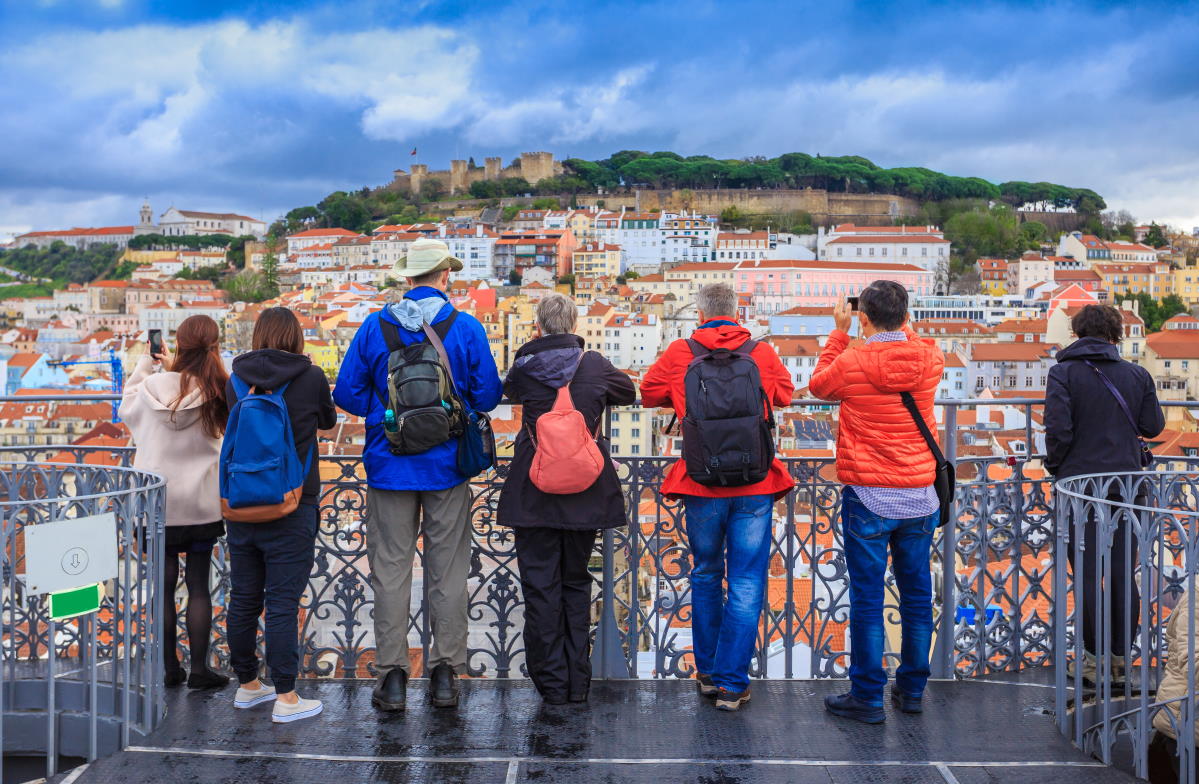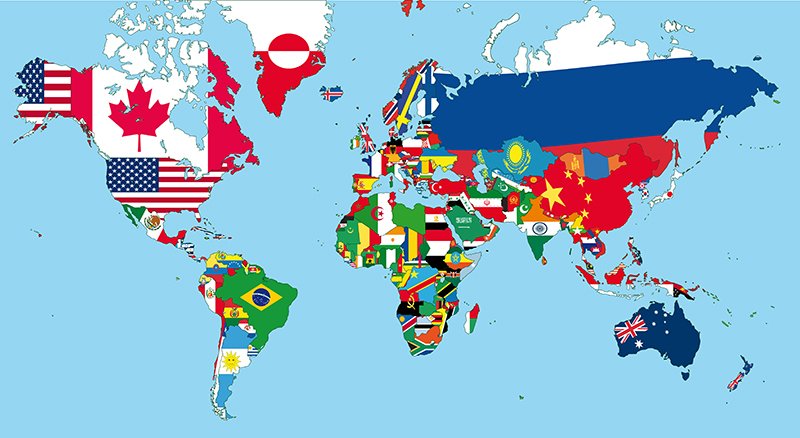The Return of Tourism
As English Tourism Week draws to a close, the magic of travel is slowly returning to the world, an industry reborn after the unforeseen disaster of a pandemic.
In 2020 tourism ground to a halt. This was unprecedented and not a single attraction, destination, or resort was prepared for what had just hit them. Tourism took more of a knock than nearly any other industry as they were forced to close. It was only through external aid and sheer determination that the industry powered through the two years following the shutdown. Innovation and experimentation were key for those struggling as we saw them adapt to dire circumstances.
Having just returned from The British Tourism and Travel Show, I find myself still in awe of the optimism that radiated from the cavernous hall. What was an empty room three years ago is now bustling with eager visitors and welcoming tourist boards. I spent all day talking to important people within the industry and listening to them speak with passion about the recovery of tourism. Their main focus was projections for the future and how the predicted influx of inbound tourism could bolster the domestic that had just reached pre-pandemic levels. However, to judge this we must see how 2023 compared to 2019 for travel.
2023, a look back
Last year we realised that tourism could stand on its own two feet again. We saw domestic travel reach above 2019 levels and plateauing there. Over 65 million trips occurred and that is just within the country! It is brilliant that domestic travel has become so healthy again with over £50 billion in spending across Great Britain for the year.
Inbound travel is a slightly different story. It isn’t a secret that I am interested in how translation within the industry is recovering, so inbound travel is my bread and butter. Overall, it has not yet reached pre-pandemic levels. On the surface, this may appear to mean that inbound is struggling and Britain isn’t seeing as many visitors as before. I believe this can be disproven as the number of people coming to visit family and friends is up by 5% and holiday travel is down 6%, with family visits being a much higher proportion of visitors. The true culprit for the lower figures looks to centre on business travel. We found out while locked up in our houses that the majority of international business could be completed from the comfort of our own homes. Now we see the return of offices and business meetings we have found it is much easier and cheaper to get this done online. I believe it is this factor that has been the main contributor to business travel being down 28% from 2019 levels, and therefore bringing down the industry’s numbers as a whole.
2024, what is to come?
The future is bright for tourism. I could tell you this only from meeting with those involved and hearing their excited tone while talking about the coming year. Nevertheless, sometimes we like to see the statistics behind the optimism. While listening to the leaders of Britain’s tourist boards I found out that domestic travel may fall slightly by ~5%. I know that isn’t the good news I keep talking about but there’s a reason, I promise!
What I found out was that inbound travel is going to more than make up for this gap. On a steady rise since the big drop in 2020, inbound travel is projected to reach the same levels as domestic travel by 2029. In the meantime, it is plugging the gap left by the surprising peak of domestic travel in 2023.
This means that people all over the world are looking at Britain as one of the top destinations again.
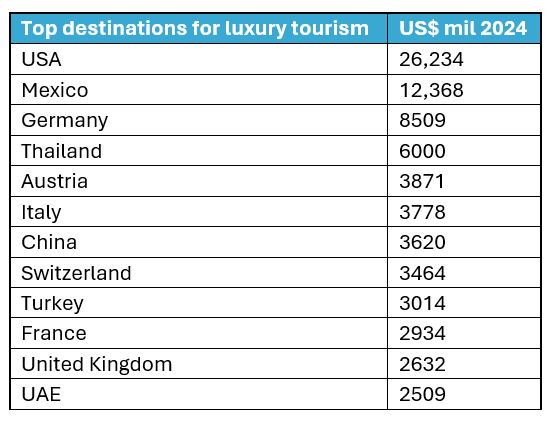
Source: Euromonitor International – Passport Travel
We can see that the UK and the UAE are on the rise and about to break into the top ten for luxury travel. While this is wonderful news for the UK as we see more tourism hit the shores of our island, it is even better for the UAE as they join the ranks of the usual top tourist destinations. This coincides with the popularity of Arabic language requests in the translation industry and means people are realising the value translation has for visitors to their country.
Another growing request for translation is Japanese. A people that are well-known for their pride in culture and language, they rank 28th in the Linguistic Diversity Index (UNESCO). This puts them as one of the least linguistically diverse countries in the world, only behind Korea in East Asia. This is extremely relevant to the tourism industry when we see how much the Japanese spend on luxury travel.
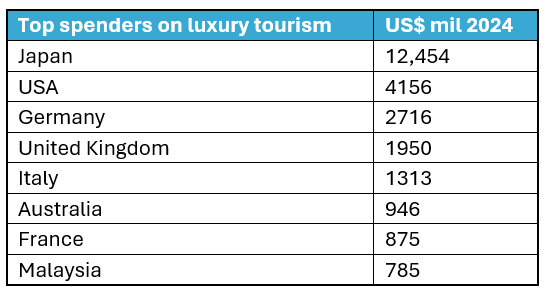
Source: Euromonitor International – Passport Travel
When we see them spending three times more than the second country, it becomes clear why people are starting to realise that having their literature in multiple languages like Japanese is a must.
Can you only travel in luxury when you’re old?
Contrary to popular belief, you don’t need to be retired and rich to travel well. I found out that the highest proportion of luxury travellers are actually in the 30-44 age range, with the 15-29 range just behind. Compared to earlier decades when the older generation was spending more on travel than the young, we see a change in mindset leading to a more free-spending generation. This could be due to the pandemic giving them a different outlook on life, living while young, or it could be down to the freedom of information in the world these days that allows younger people to access and seek out new adventures.
What kind of travellers are coming to the UK?
From adventure lovers to cultural explorers, eco-adventurers to wellness worshipers, and Luxury or leisure seekers, they all wish to visit the UK for different reasons and that’s why the country caters to all of these in different ways. Each of these traveller types has between a 9 and 14% split of British inbound tourism, only leisure seekers stand out from the pack with over 20% of tourists coming for a relaxing holiday. This is great news for the hotel and translation industry as we see trends in most travellers preferring to stay at highly rated and luxury hotels, which is only rising, by 2028 luxury hotel sales are predicted to be 25% higher than in 2023. Whereas mid-market hotels look to only be at 15% and unrated hotels see barely any growth at all.
How does this affect the translation industry? It seems obvious when you think about it, but the more accessible and amenable a hotel is, then the higher rated it becomes. The best access a foreign visitor has is seeing their native language being catered to. I know when I go abroad and see everything I need to know in English, I am suddenly much more relaxed and ready to have a good time because I know I’m not missing any important messages.
How sustainable is all this new business?
It’s well known that we are all looking toward a more environmentally friendly future. Tourism is part of this problem and it knows it. We know how much of a detriment to the environment air travel can be, yet up to now, we have lived in wilful ignorance as it was easily the most convenient way to travel. This seems to be changing as we become more educated on the amount of pollution a single plane journey can produce, leading to people being more willing to find alternative means of travel. While at the British Tourism and Travel Show, I found out that over 90% are willing to pay more for car/train travel these days, and a quarter of all who were surveyed were willing to pay over 50% more for sustainable travel. While plane travel is still going to be popular and the most convenient way to travel, we can hope that people are beginning to think a little more when deciding how to get to their next holiday destination.
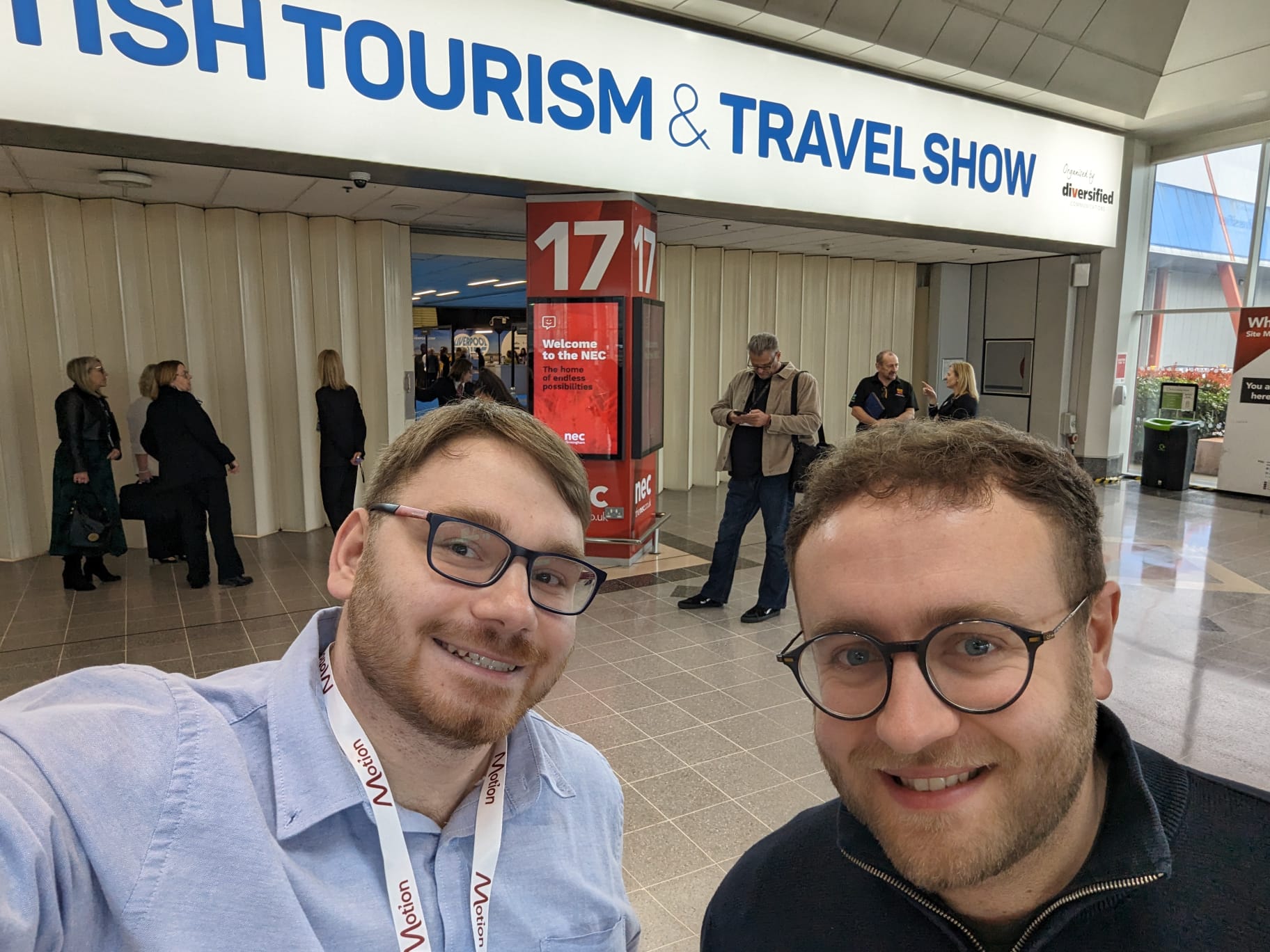
I left the show to the sound of the visiting town crier who had come to announce every sentiment I have just expressed, that tourism is back and bigger than ever!



